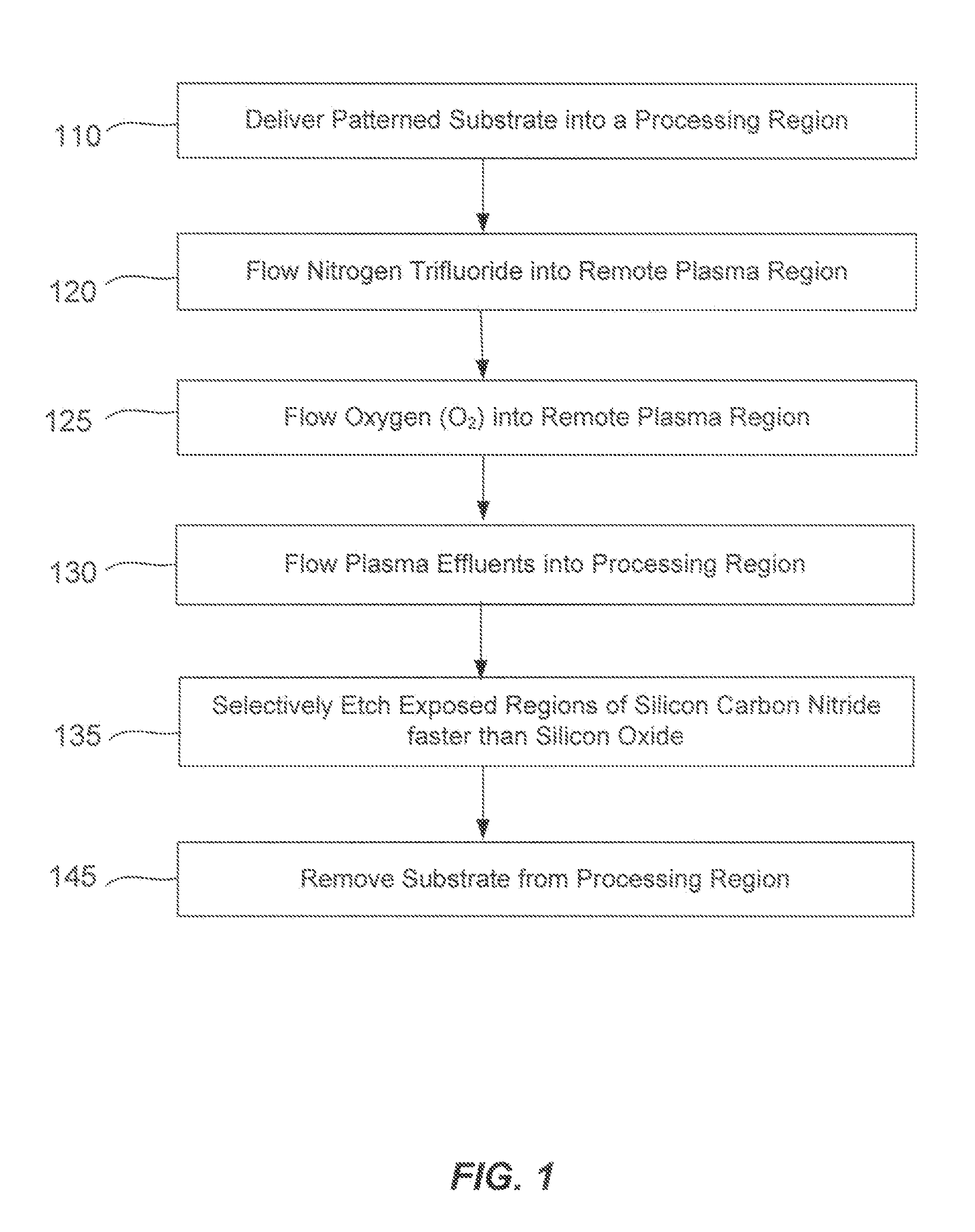Silicon-carbon-nitride selective etch
a silicon carbon nitride and selective etching technology, applied in the direction of basic electric elements, electrical equipment, electric discharge tubes, etc., can solve the problem of few options for selective etching of silicon carbon nitride, and achieve the effect of faster ra
- Summary
- Abstract
- Description
- Claims
- Application Information
AI Technical Summary
Benefits of technology
Problems solved by technology
Method used
Image
Examples
Embodiment Construction
[0014]A method of etching exposed silicon-nitrogen-and-carbon-containing material on patterned heterogeneous structures is described and includes a remote plasma etch formed from a fluorine-containing precursor and an oxygen-containing precursor. Plasma effluents from the remote plasma are flowed into a substrate processing region where the plasma effluents react with the exposed regions of silicon-nitrogen-and-carbon-containing material. The plasma effluents react with the patterned heterogeneous structures to selectively remove silicon-nitrogen-and-carbon-containing material from the exposed silicon-nitrogen-and-carbon-containing material regions while very slowly removing selected other exposed materials. The silicon-nitrogen-and-carbon-containing material selectivity results partly from the presence of an ion suppression element positioned between the remote plasma and the substrate processing region. The ion suppression element controls the number of ionically-charged species t...
PUM
 Login to View More
Login to View More Abstract
Description
Claims
Application Information
 Login to View More
Login to View More - R&D
- Intellectual Property
- Life Sciences
- Materials
- Tech Scout
- Unparalleled Data Quality
- Higher Quality Content
- 60% Fewer Hallucinations
Browse by: Latest US Patents, China's latest patents, Technical Efficacy Thesaurus, Application Domain, Technology Topic, Popular Technical Reports.
© 2025 PatSnap. All rights reserved.Legal|Privacy policy|Modern Slavery Act Transparency Statement|Sitemap|About US| Contact US: help@patsnap.com



